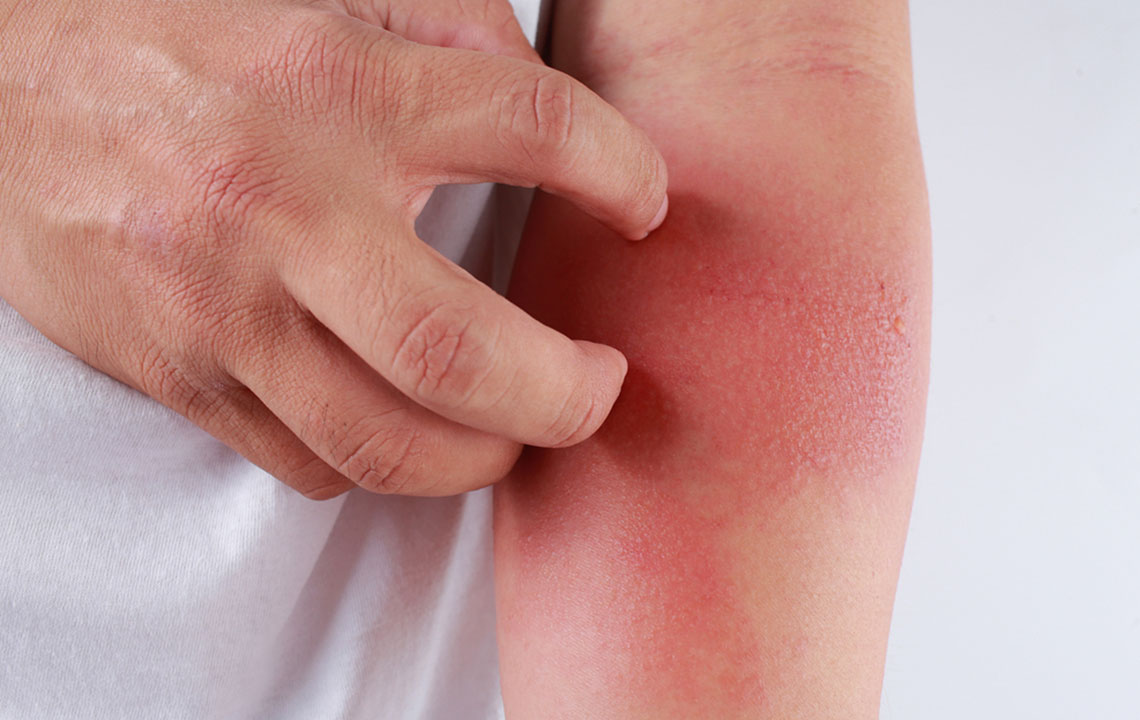4 Types of Skin Rashes You Should Know Of
An irritation on the skin often leads to the origin of a rash. Rash occurs due to many reasons, and it is detected from a change in the skin color and texture. It is mostly caused because of skin inflammation. Heat, allergy from a particular element, and medicinal side-effects are some other causes behind many types of skin rashes. There is no specific diagnosis; however, it is referred to any inflammation or discoloration of the skin as compared to its usual appearance.

Over-the-counter medicines might be helpful only if the rash stays for a few days to a week, but if it extends over a period, say two weeks, then it is advisable to consult a doctor immediately. The most common among the various types of skin rashes is eczema, granuloma, pityriasis rosea, lichen planus, etc. Blister formation, itching, scaling, and bumps on the skin are some of the signs and symptoms indicating that it is a skin rash. Some rash may also be associated with fever and other illness, and in that case, you must visit a physician as soon as possible.
Types of Skin Rashes
- Eczema: Red, itchy, and inflamed skin defines eczema which is the most common skin rash. It is not contagious and can occur at any age. Atopic eczema or atopic dermatitis is a common form of eczema. There is no specific reason for its cause, but it affects a family that has a medical history of allergies. It appears on the hands and elbows, and also in the inside of the knee and elbows, especially in adults. In young children, it can occur anywhere on the face, neck, scalp, knee, and elbow. Prescribed medicines and ointments and over-the-counter drugs with the steroid hydrocortisone are used to treat eczema. The pills and creams work on the itching, swelling, and the redness of the skin and control the condition.
- Granuloma: A chronic condition of the skin that forms papules is known as granuloma annulare. Papules are red circular bumps on the skin. It occurs more commonly in girls and affects young adults and children. People who are of a healthy stature are victims of this chronic condition. Itchy, red rings initially appear on the arms, forearms, and legs leading to small circular bumps. Steroid creams are enough to treat the issue, but if the case is of utmost severity, steroid injections may be injected on the rings of the bumps.
- Pityriasis rosea: The condition of the skin shows large, pink, and scaly patch on the chest and back. The patch is followed by reddish inflammation and additional patches of skin. The color of the skin changes to red along the area of the rash. The cause of pityriasis rosea is yet unknown, but there is a suggestion that it might be due to a virus as the shape of the rash resembles a viral infection. It is, however, not contagious. It affects the neck, upper arms, chest, back, abdomen, and legs. Mild conditions do not need treatments, moreover, many times severe conditions of pityriasis rosea does not require any treatment, and itching can be soothed through oral antihistamines. It is better to avoid exposing the rash to too much of the sun’s rays.
- Lichen Planus: It is one of the types of skin rashes that produce reddish purple flat-headed bumps with an angular shape. Lichen planus is common in adults aged between 30 to 70 years. It can occur anywhere on the skin but is often found on the inner part of the wrist, ankles, back, and neck. Some people develop this rash inside their hair, genital, mouth, even the nails. The hins may have a cluster of bumps too. The cause of it is though unknown, it is suggested that there is a link between this type of skin disorder with the Hepatitis C infection. It is a form of skin rash that has no cure, but since it affects small parts of the body, medicated cream, or steroid injection can be applied on the area affected.
There are several other types of skin rashes that develop from heat, or as a side-effect from a therapeutic drug. Other include contact dermatitis, heat rash, drug rash, intertrigo, psoriasis, and much more. The causes are varied but often unknown. The best way to treat the rash is to avoid itching. The more you itch, the more viral it becomes and causes discomfort in return. Using over-the-counter medicines and ointments often help. Calamine lotion gives a cooling and soothing effect on the affected area. Protection from the sun is necessary, though some rashes need light therapy to treat them. However, if a rash persists for more than a month, it is better to visit a doctor.




